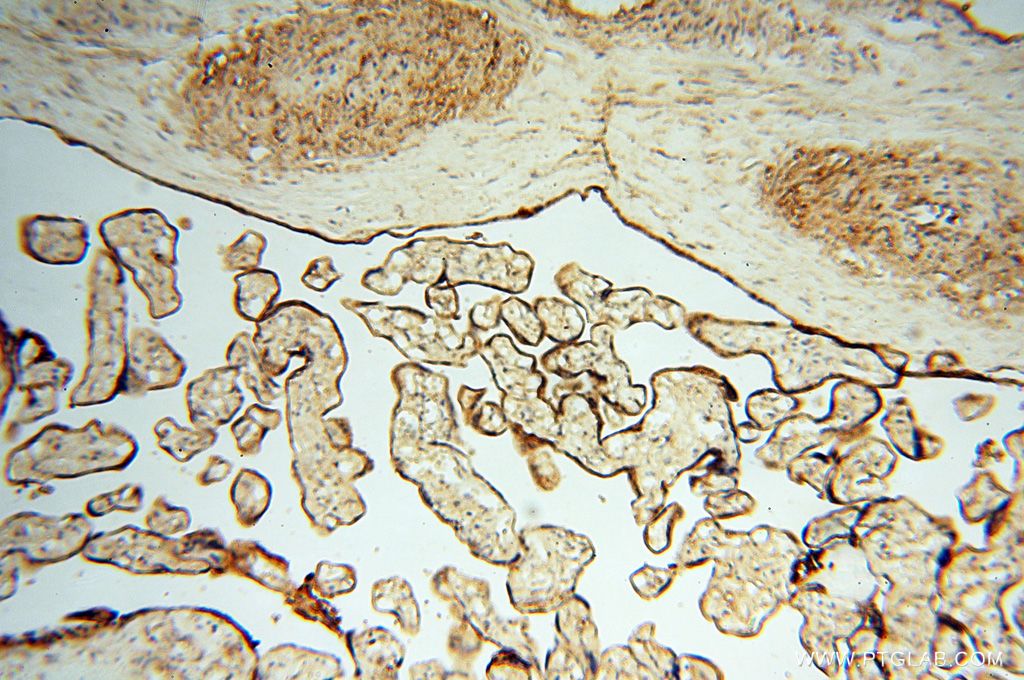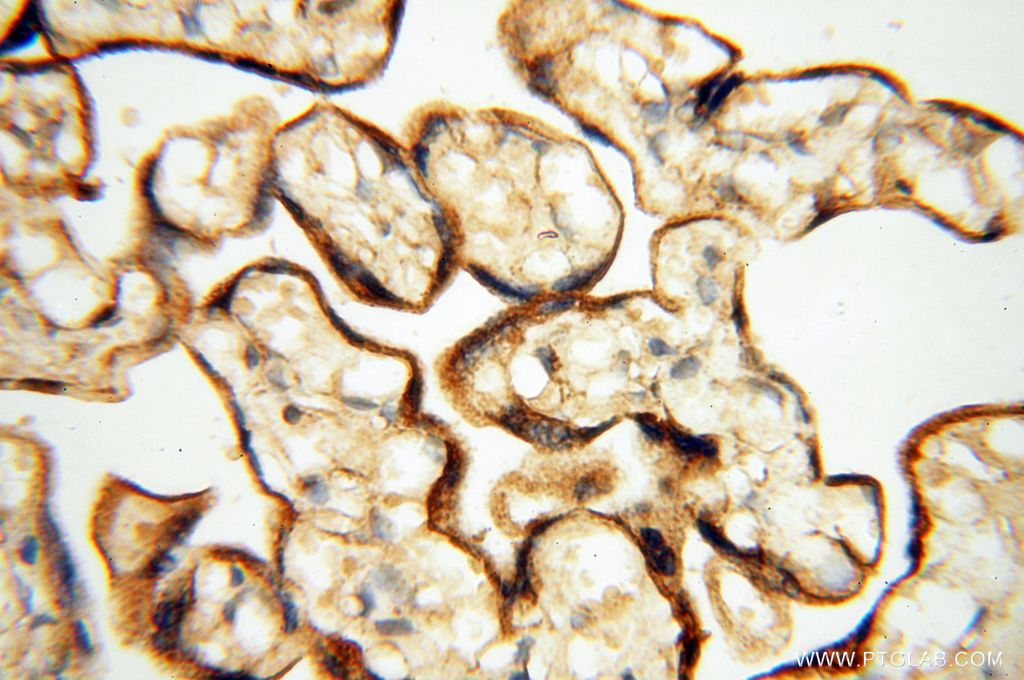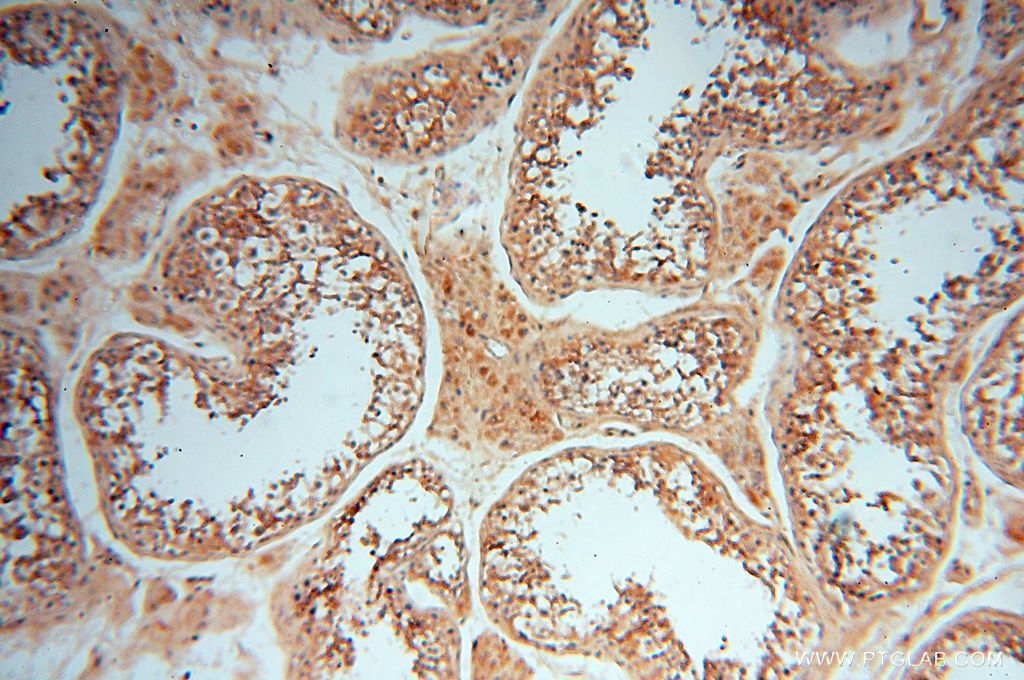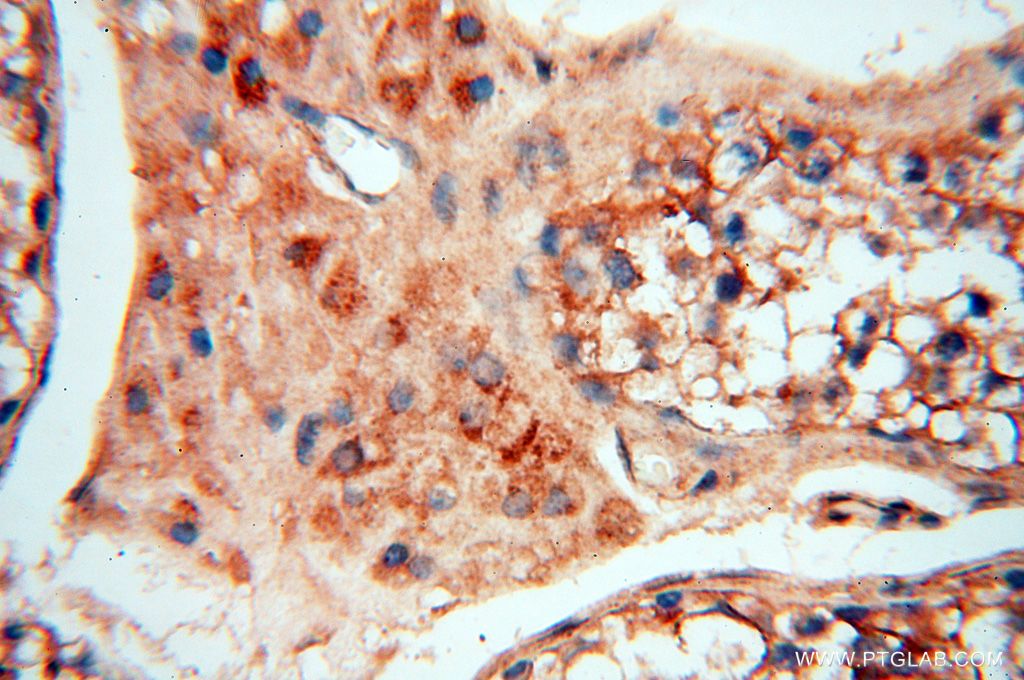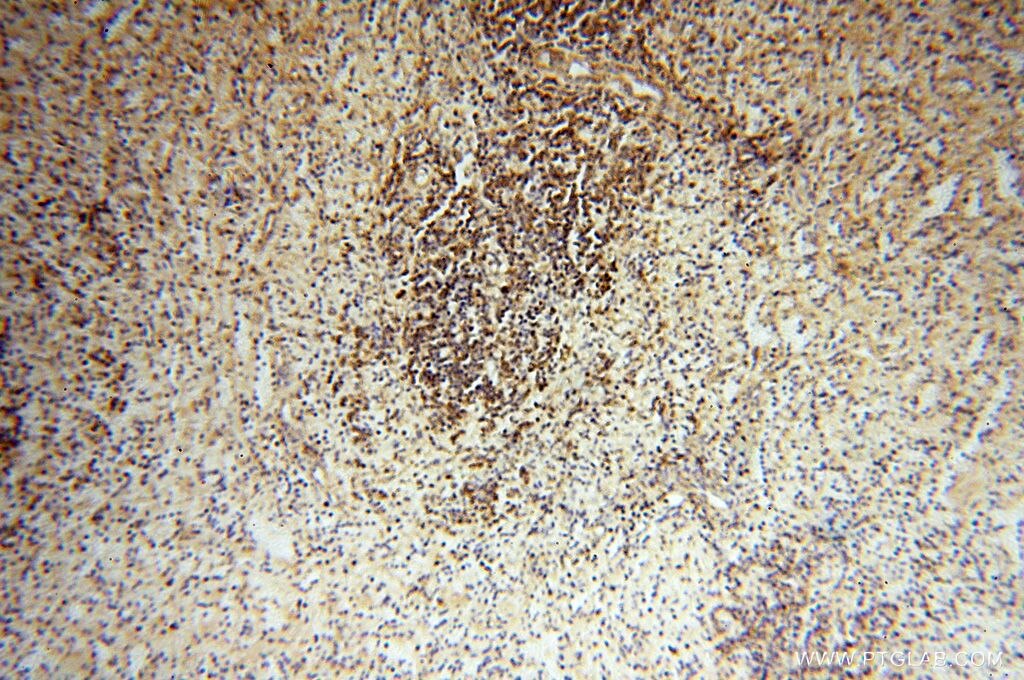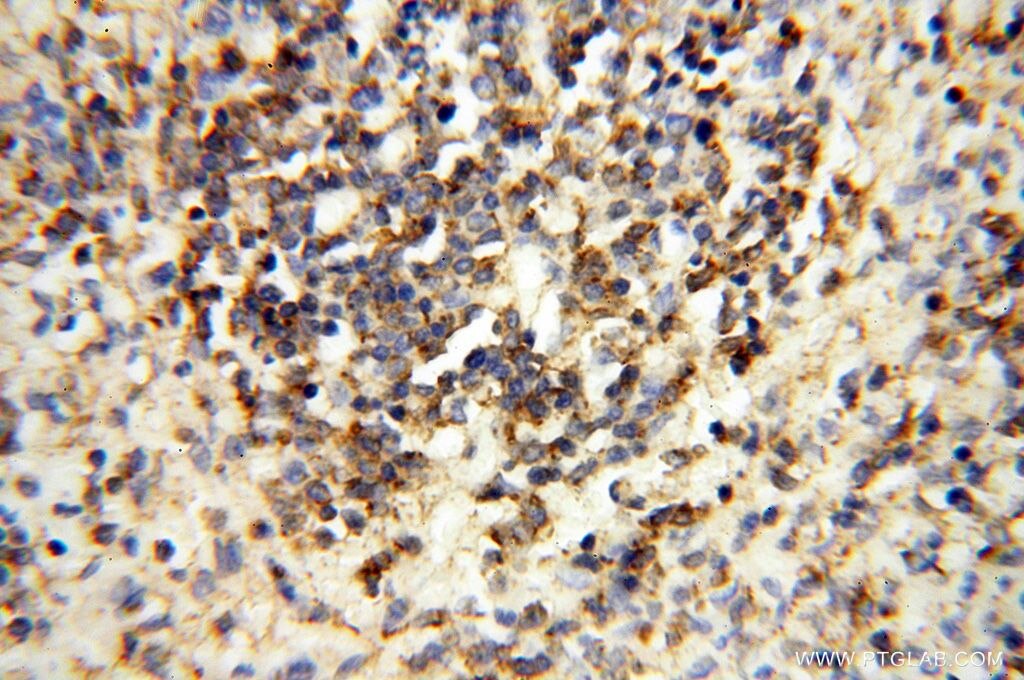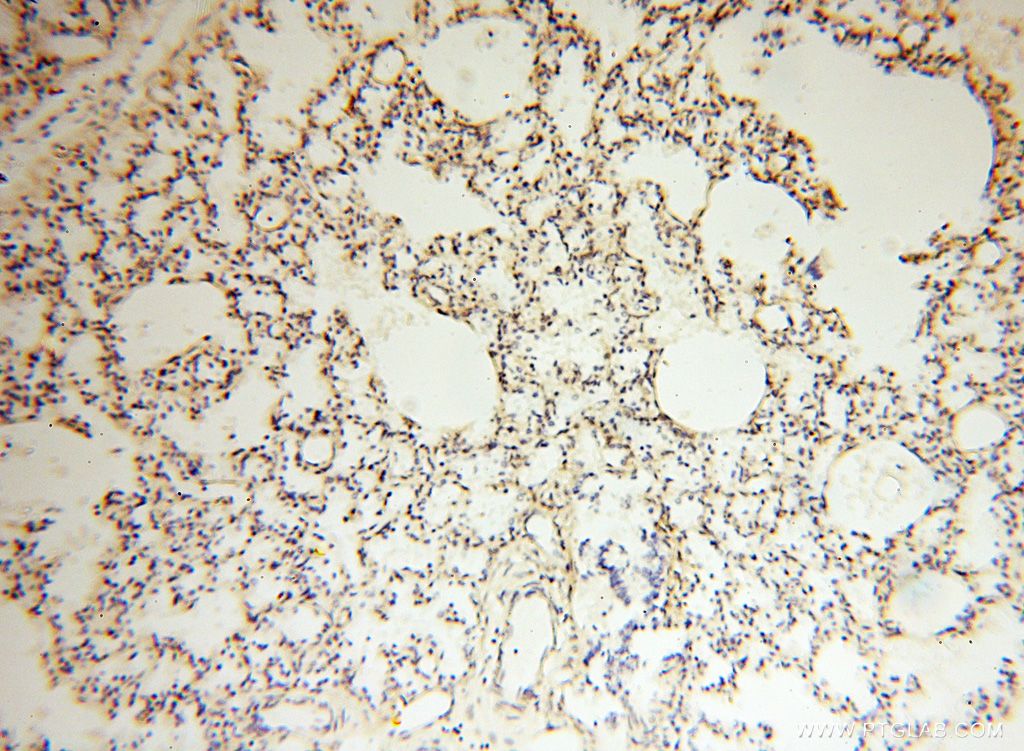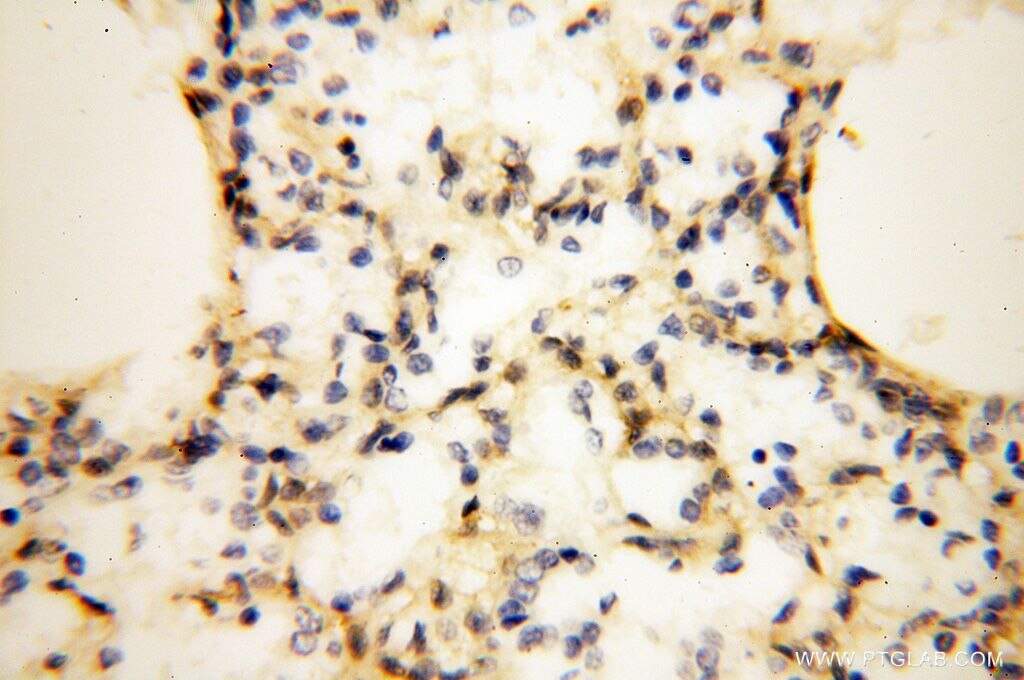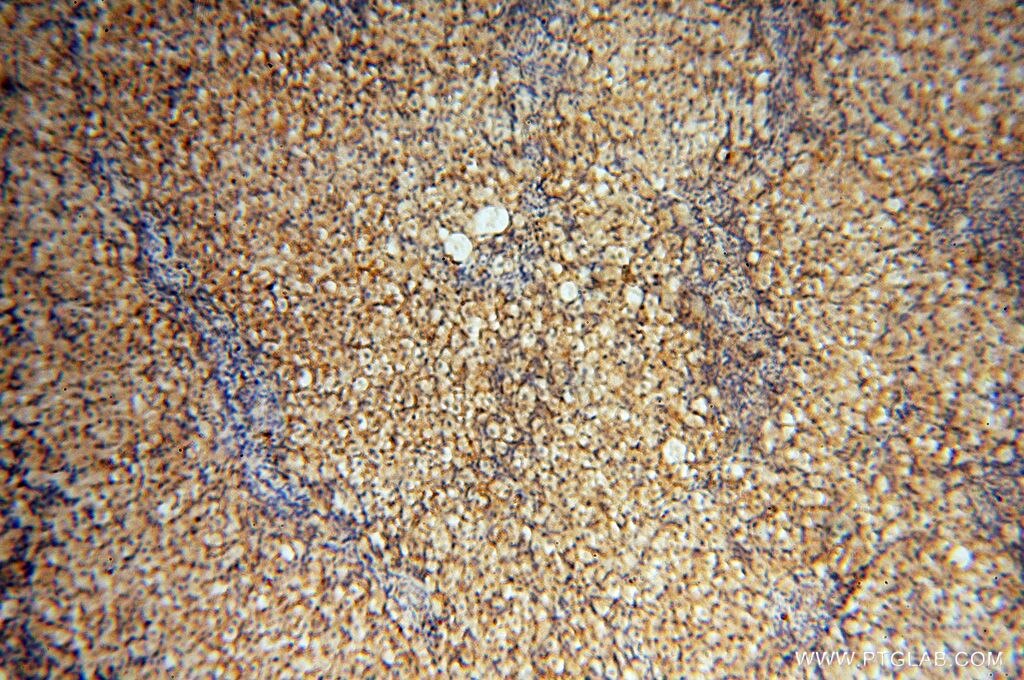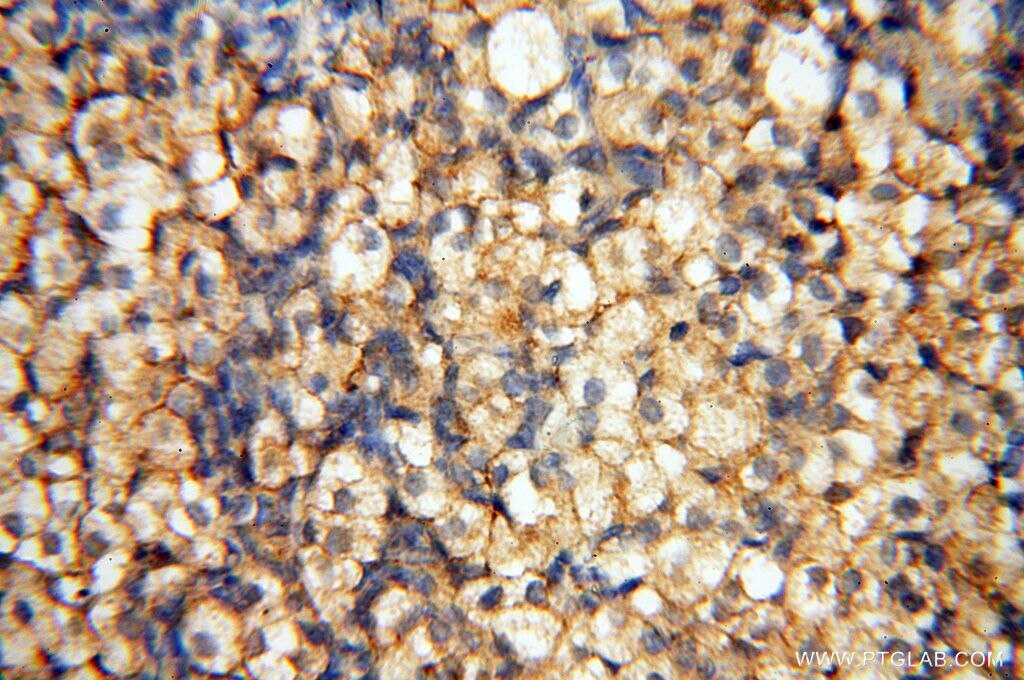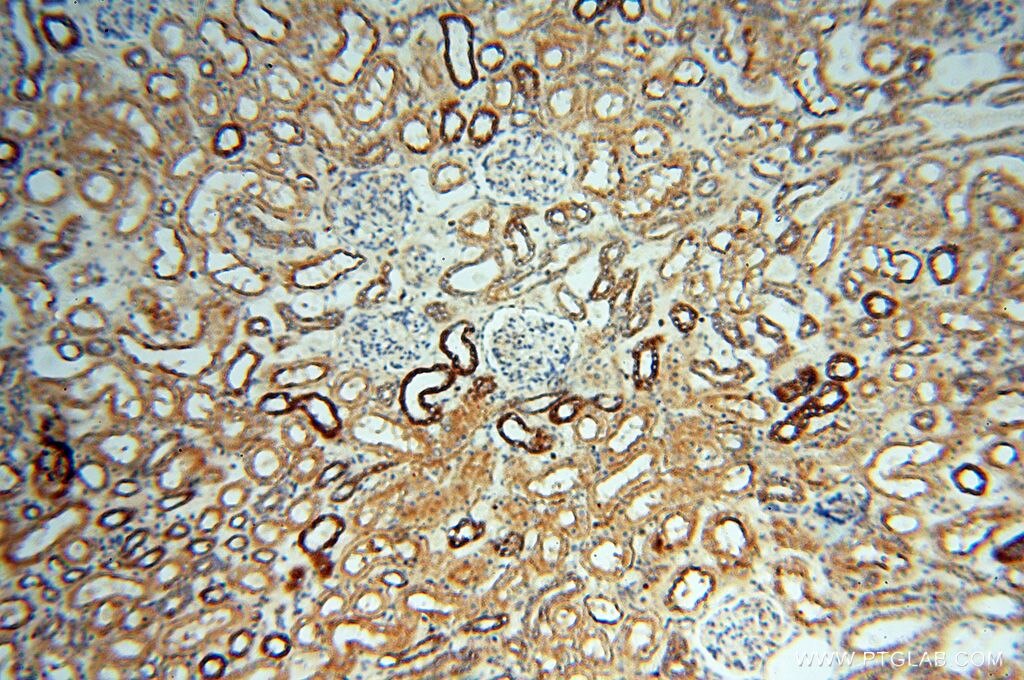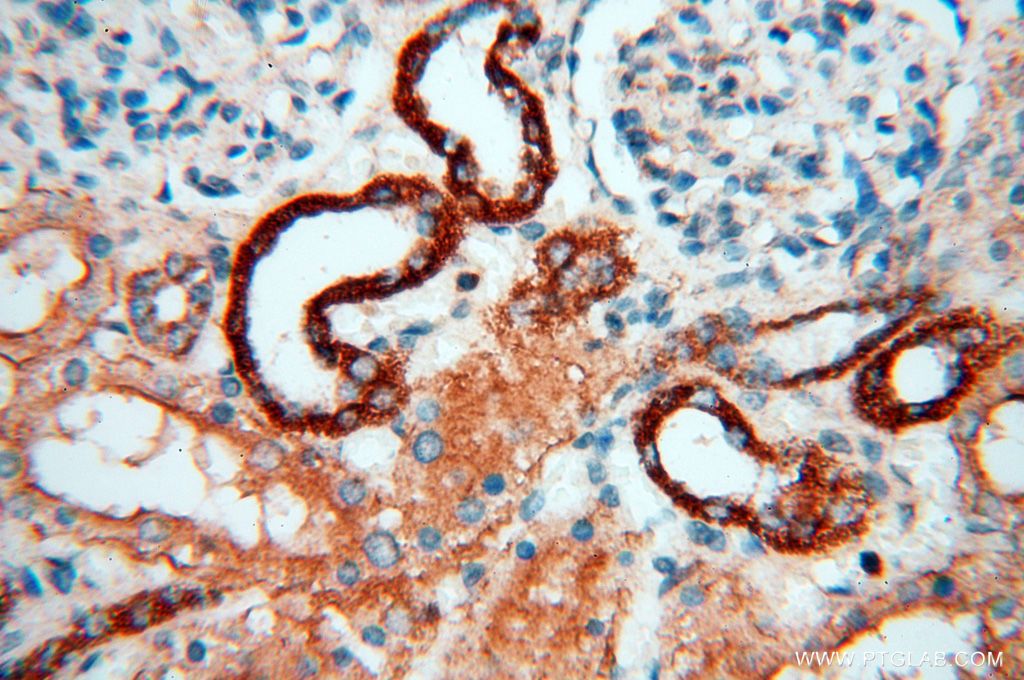Anticorps Polyclonal de lapin anti-FBXL8
FBXL8 Polyclonal Antibody for IHC, ELISA
Hôte / Isotype
Lapin / IgG
Réactivité testée
Humain, rat, souris
Applications
IHC, ELISA
Conjugaison
Non conjugué
N° de cat : 16505-1-AP
Synonymes
Galerie de données de validation
Applications testées
| Résultats positifs en IHC | tissu placentaire humain, tissu ovarien humain, tissu pulmonaire humain, tissu rénal humain, tissu splénique humain, tissu testiculaire humain il est suggéré de démasquer l'antigène avec un tampon de TE buffer pH 9.0; (*) À défaut, 'le démasquage de l'antigène peut être 'effectué avec un tampon citrate pH 6,0. |
Dilution recommandée
| Application | Dilution |
|---|---|
| Immunohistochimie (IHC) | IHC : 1:20-1:200 |
| It is recommended that this reagent should be titrated in each testing system to obtain optimal results. | |
| Sample-dependent, check data in validation data gallery | |
Informations sur le produit
16505-1-AP cible FBXL8 dans les applications de IHC, ELISA et montre une réactivité avec des échantillons Humain, rat, souris
| Réactivité | Humain, rat, souris |
| Hôte / Isotype | Lapin / IgG |
| Clonalité | Polyclonal |
| Type | Anticorps |
| Immunogène | FBXL8 Protéine recombinante Ag9685 |
| Nom complet | F-box and leucine-rich repeat protein 8 |
| Masse moléculaire calculée | 374 aa, 41 kDa |
| Numéro d’acquisition GenBank | BC014414 |
| Symbole du gène | FBXL8 |
| Identification du gène (NCBI) | 55336 |
| Conjugaison | Non conjugué |
| Forme | Liquide |
| Méthode de purification | Purification par affinité contre l'antigène |
| Tampon de stockage | PBS avec azoture de sodium à 0,02 % et glycérol à 50 % pH 7,3 |
| Conditions de stockage | Stocker à -20°C. Stable pendant un an après l'expédition. L'aliquotage n'est pas nécessaire pour le stockage à -20oC Les 20ul contiennent 0,1% de BSA. |
Informations générales
FBXL8(F-box/LRR-repeat protein 8) is also named as FBL8 and belongs to the F-box protein family, which are characterized by an approximately 40-amino acid F-box motif. The human FBXL8 protein contains an N-terminal F box, followed by 8 leucine-rich repeats. It interacts with SKP1 and CUL1 directly.
